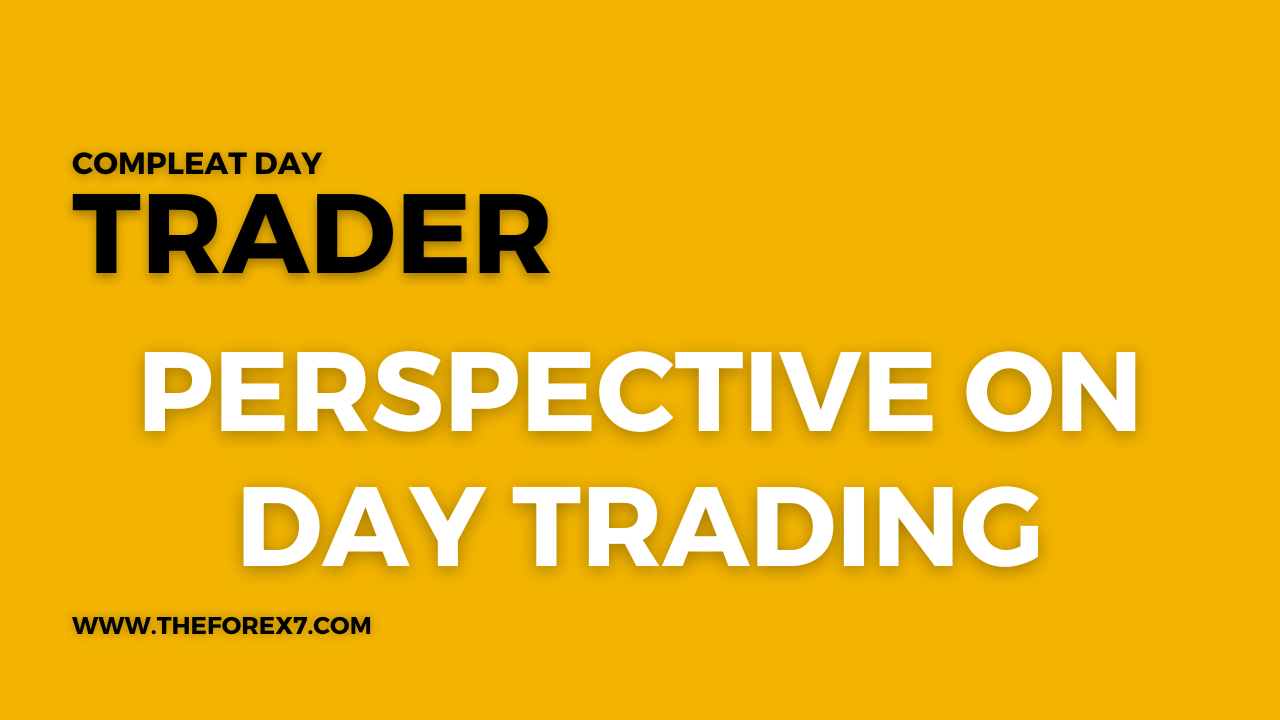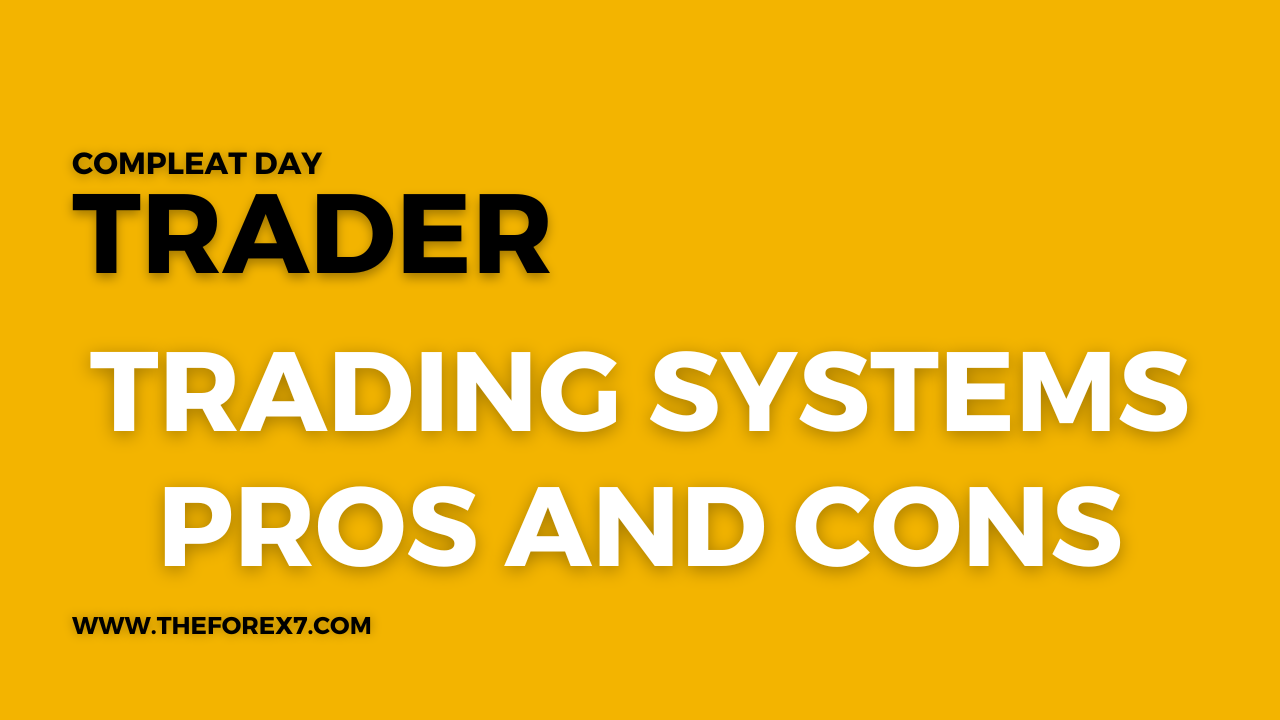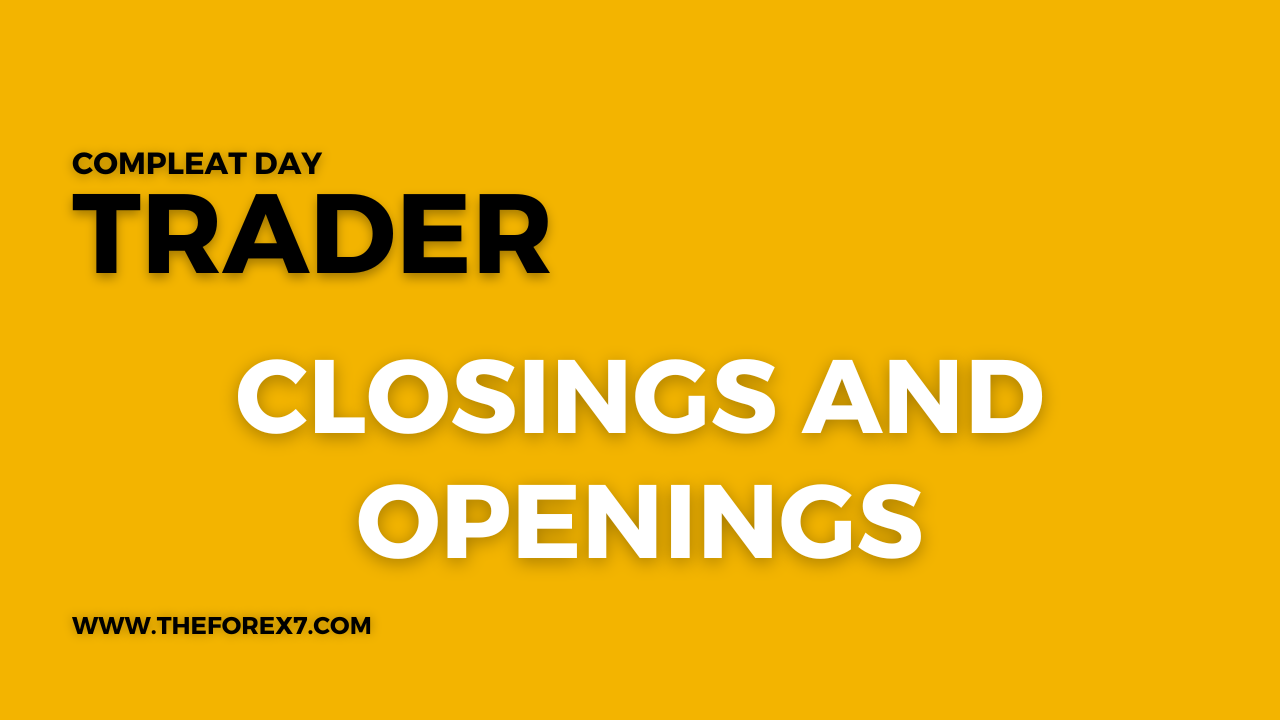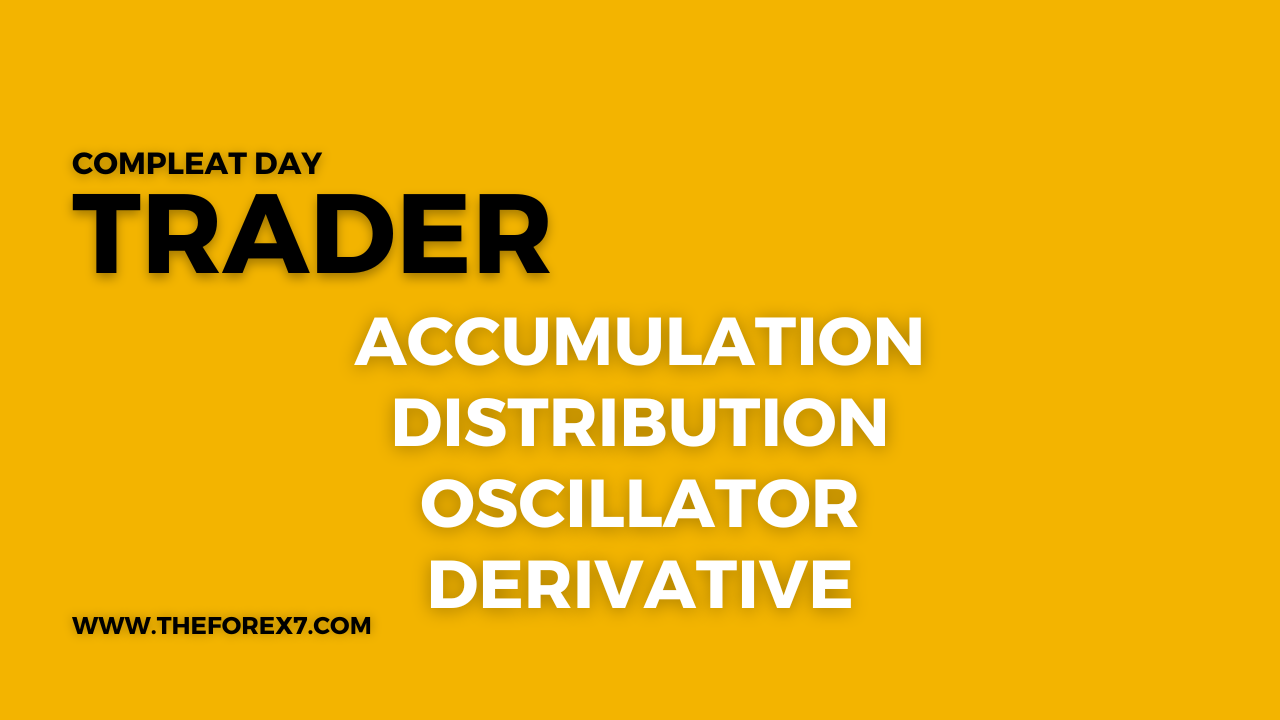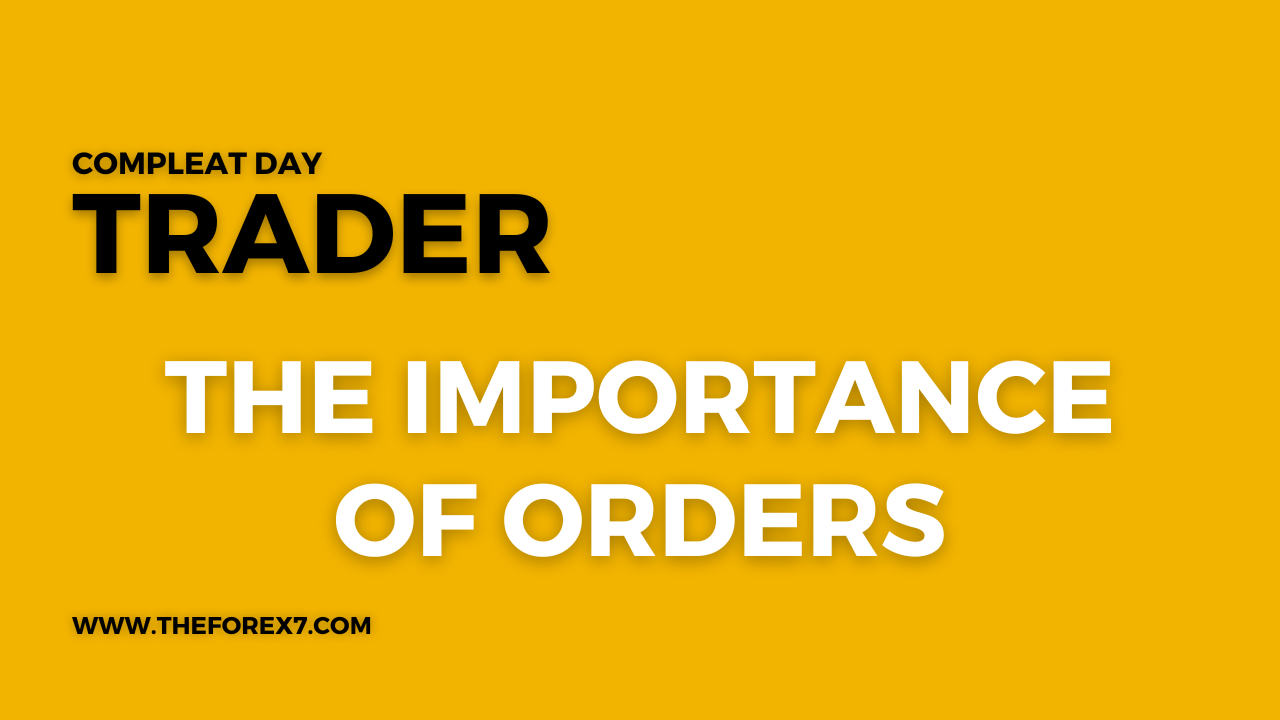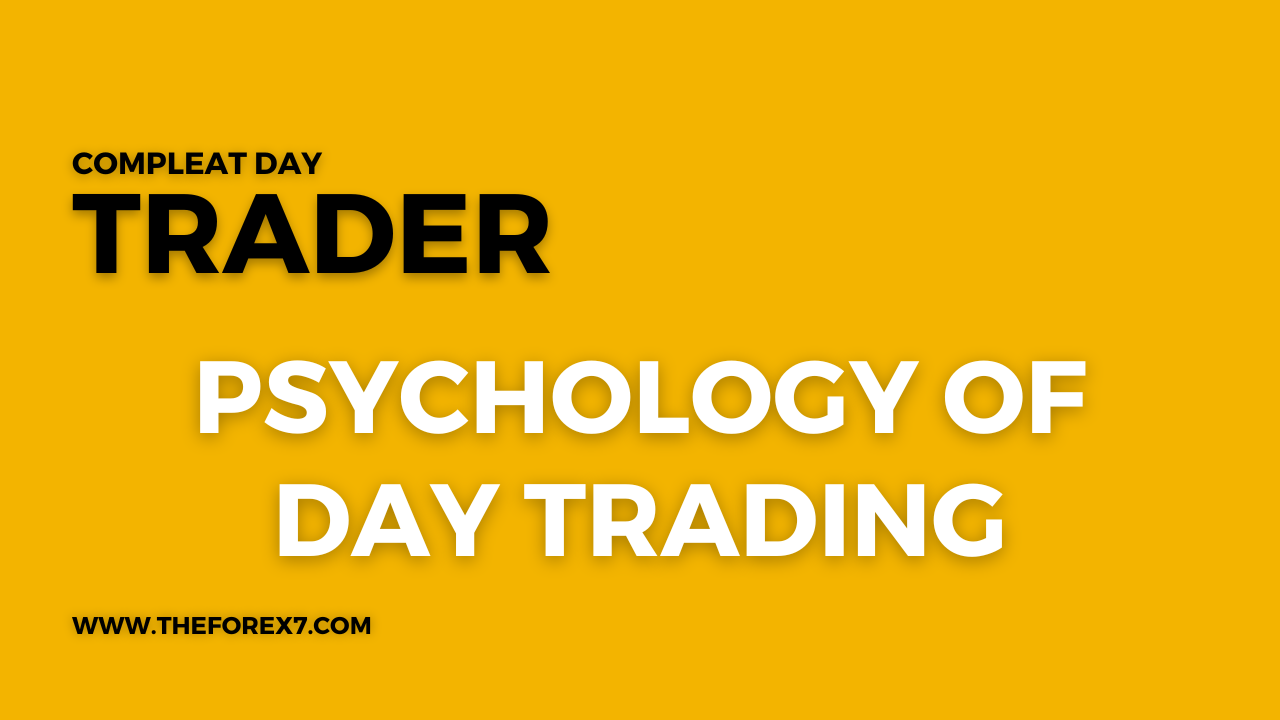Emotions, Traders and Markets
Systems Trading, Discipline, Profits, Money Trading, Futures Markets, Plan of Action
Course: [ THE COMPLEAT DAY TRADER II : The Compleat Day Trader ]

In his brief but powerful commentary on the nature of insanity and human emotion, Friedrich Nietzsche unknowingly but explicitly described the nature of the human condition in the stock and futures markets.
Emotions, Traders, and Markets
Madness is rare in individuals, but in
groups, parties, nations and ages, it is the rule...
FRIEDRICH NIETZSCHE
In his brief but powerful commentary on the
nature of insanity and human emotion, Friedrich Nietzsche unknowingly but
explicitly described the nature of the human condition in the stock and futures
markets. To apply his profound words to the markets is, perhaps, to pervert his
intent, yet they are so deeply apropos that the comparison begs to be made. For
the day trader intent upon success, Nietzche’s words may well prove to be a
cornerstone of market fact.
The history of humankind is the history of
speculation. In one form or another, speculation dates back thousands of years
to the earliest days of recorded history. Our forebears speculated daily on the
weather in their search for shelter. In growing crops and in warding off
hostile animals and aggressors, their speculative ventures became matters of life
and death. Whether for the purpose of survival or success in business, risk
taking has always been a vital and necessary part of life on our planet.
With risk and speculation, however, come the
inevitable and unavoidable consequences and evils of emotion. We fear that our
decisions will lead to pain or losses, and we are therefore ready victims of
other emotional and behavioral consequences. We fear that failure to take
action will lead to negative consequences, so we act impulsively. Impulse is
the primary enemy of all traders; however, it can be particularly destructive
to the day trader.
We seek to protect what we have gained for
fear it will be lost or that its quantity may be diminished. We are motivated
by greed to expect large profits from small investments, which causes us to
ignore our rational thoughts and prompts us to act on emotion. There are
literally thousands of human behaviors that are motivated by the expectation of
financial gain or by the fear of financial loss.
Even a cursory study of world financial
history leads to the inescapable conclusion that there has always been a close
relation-ship between the intensity of human emotions and significant market
turning points. Whether novices or seasoned veterans, investors and traders
know that the madness of crowds is often hard at work when markets establish
major tops and bottoms. As a day trader, you will need to keep your emotions in
check at all times, since the intensity of emotional expression is most readily
observed within the trading day and in response to news reports, international
events, and crises.
We know, almost intuitively, that the crowd
will be wrong most of the time. In order to avoid being trampled to death in a
burning theater, we must choose the exit that the mob has not chosen. To
survive financial panics and crashes, it is imperative for us to muster every
ounce of courage so that we may buy when the "whole world" is
selling or sell when the panicked crowd is in a buying frenzy.
We know from repeated and often costly experience
that those who can buy into crashes and panics will be successful, while those
who can sell into buying panics will also profit handsomely. Yet we are also
painfully cognizant of the fact that to do so runs totally contrary to the
primordial maps that have shaped our behavior for hundreds and thousands of
years. The "fight or flight" response causes us to fight
markets or to flee from them, rather than to evaluate them objectively and
unemotionally.
Emotional extremes correlate closely with
major market tops and bottoms. This correlation can be readily ascertained by
examining certain evidence such as newspaper accounts, magazine articles,
television and radio reports (where available), and trader anecdotes. Study
them to know whether a market is close to bottoming or topping. When the news
is most bullish a top is imminent. Pervasive bearish news suggests a bottom.
Many of the day-trading indicators discussed in this book translate emotion in
market methodology.
Various technical market indicators such as
trading volume, specific chart formations, and timing signals also have shown
considerable predictive validity when correlated with measures of investor
emotion, particularly in the day time frame. Mob psychology is clearly in
evidence at virtually all major market tops and bottoms. Emotion can be your
worst enemy or it can be your best friend. Make it your friend and ally in the
day time frame, for it is a formidable enemy that cannot be defeated. In order
to do this, you will need to rely on objective, operational, and definable
methods.
Develop Your Rules
In order to steer your emotions in a positive
direction, you must follow certain general rules. To those who have been in the
markets for many years, the time-tested and oft-repeated trading rules are well
known. In fact, they are so well known that few of us give them sufficient
attention.
If you understand these important rules in
the light of your personal psychology, you may be more willing to use them. I
have found it very useful to keep a list of these rules where I can refer to
them often; they help keep me on the right track.
· Plan your day trades and keep them available
for reference. If you are specific, organized, and act on plans, you will avoid
costly efforts often caused by spontaneous decisions. A concise day-trading
plan will help you avoid the losses that can arise from acting impulsively. In
short, plan your trades and trade your plans.
· You alone are responsible for your success or
failure. You must assume total responsibility for results, good or bad. You
alone are the vehicle to profits and losses. By assuming total responsibility
and not blaming brokers, friends, or market letters for errors, you accept the
seriousness of trading. You will learn that the situation is entirely under
your own control. This will make you consistent and truthful to your trading
system, which is the single most valuable key to success as a position trader
or as a day trader.
· Never hope that a day trade will go your way;
never fear that a day trade will not go your way. Both attitudes lead to
unrealistic expectations, emotionally inspired decisions, and negative attitudes.
A day trade, once established, will result in whatever market action prevails.
Once the trade has been made, its fate is
sealed and no amount of hope or fear will make things different. Hope and fear
are two of the greatest enemies of the day trader, fostering only false
perceptions. You must avoid these feelings at all costs. If your system says to
exit, then do so. Do not carry your day trade overnight unless your system so
dictates.
· Monitor your performance—feedback is important. One of the most
important things a day trader can know about his or her system is whether it is
working. The only way to know this is by keeping a thorough record of results.
This will also provide the feedback necessary to reward you for good trading.
At any time you must know how well or how poorly you are doing.
· A positive attitude is your greatest asset. A
good day-trading system is perhaps only 20 percent of the total picture. A
positive attitude may very well compose the balance of successful trading. You
must constantly be aware that the enemies of profitable investing and
speculation are never absent. The only way to combat the negative effects of
losses, interference from others, and poor trading signals is by the
maintenance of a positive attitude, regardless of how bad things may seem. I
know that this is more easily said than done.
· Cultivate effective and positive
relationships. We are known by the company we keep. Moreover, we are influenced
by those around us. If we surround ourselves with losers, loafers, pre-tenders,
depressives, or whiners, we will not learn any positive skills. If we associate
with those who are highly motivated, who seek to achieve, who have ambitious
goals, and who are willing to forge ahead regardless of obstacles, then we will
acquire similar goals. Personal relationships, as well as business
associations, should be cultivated along these general guidelines.
· Don't take the market home with you. If you
day trade for a living, then you must take great care to leave the market when
you leave the office. Even if you are only a part-time trader and do not have a
full-time market-related job, you must also avoid spending too much time or
thought on the markets. When things go well, you may allow the markets to have
too much influence in fulfilling other areas of your life. This is not
advisable, since it will cause you to avoid or delay solving other problems.
Trading must be considered a means to an end.
It should not become a way of life, and it should not dictate your every move.
Make certain you take vacations. Take time each year to get away from it all.
By being too close to the situation, you may not see it for what it really is.
· Enjoy the fruits of your labour spend some
profits, save some profits. Make it a regular practice to remove profits from
the market. Spend some of them and save some of them. You must directly
experience the positive feelings of using profits to acquire some of the things
you have always wanted to buy. I suggest you do this regularly, perhaps
monthly. You will not be motivated to make profits if you do not experience
first hand the enjoyment that can come from spending money.
· Avoid overconfidence—it could be your
greatest enemy. Day trading does not always move in a positive direction. Just
as you should not allow your losing day to bring you down, you must not allow
the winning day to get you up too high. If you are on either of these emotional
extremes, your judgment can be impaired and you will not be rational enough to
trade effectively. You will be either too brave or too meek. The best course is
to even out the peaks and valleys. Each loss should be a negative experience,
but not a totally destructive defeat. Similarly, each profit should be taken in
stride.
· Your next goal should always be in sight.
Once you have attained an objective, make certain that your next challenge is
set. A well- known commodity trader made several million dollars in the market
one year. He lost it and almost went bankrupt the next year. I asked him how
this could have happened. "Simple," he replied. "When
you climb a mountain and you are sitting on the top of the world, it gets
lonely. There's no place left to go but down." If, however, you have
another mountain to climb once you get to the top, you will not be tempted to
go down in order to have a new challenge.
Systems Trading, Discipline, and Profits
Cut your losses and let your profits ride.
The big money
is made in the big pull. Don't add to a
losing position.
Always use stop losses. Don't meet margin
calls. When
in doubt, stay out. The trend is your friend.
The click are worn and weary. By now you've
heard the rules about trading discipline at least a thousand times, and you're
tired of hearing them. To most traders these rules are nothing more than
words—simple to understand but near impossible to implement. And there seems to
be little anyone can do to drive the point home.
Traders are only human and, as a consequence,
are subject to the frailties of the human ego. We are unwilling to accept
losses, unhappy when profits are small, afraid when prices are too low, and too
brave when prices are high. Regardless of how often traders take losses, they
rarely learn from them. In one form or another, this subject has been the focal
point of numerous books, tapes, seminars, courses, and psychoanalysts' couches.
Sad but true, few traders ever learn how to discipline themselves no matter how
many losses they take.
Even more amazing is that many traders are
still convinced that their ticket to success is to find a better trading
system. Actually, most traders will lose with any trading system no matter how
well it tests or how promising it appears to be. A disciplined trader can be
highly successful with a mediocre trading system, and a bad trader can be a
failure with an otherwise outstanding trading system. Clearly, there is only a
limited positive correlation between trading-system potential as revealed by
historical testing and its actual performance in the hands of a trader. There
is absolutely no doubt in my mind that the trader makes the system and not vice
versa.
Now that the problem has been stated, the
issue is how to remedy it. To suggest that I can provide the answers in several
pages of text would be the height of sophistry. I can, however, address the
subject with considerable authority given my years of trading experience and my
intensive observations of how others trade. Traders throughout the world have
told me of the benefits they have derived from my 1980 book, The Investor's Quotient,
and from my 1988 book, Beyond the Investor's Quotient. My work with trading
systems both as developer and trader has given me a unique perspective on the
discipline problems that face all traders. Although my suggestions can be very
helpful, they are not to be taken merely at face value. You will need to study
and refine them to fit your trading style and your personality.
A Few Good Ways to Lose Money Trading the Futures Markets
E.L. Thorndike, the father of American
learning psychology, noted that there are literally thousands of wrong behaviors
and only relatively few right behaviors. His point was made in reference to the
use of punishment as an aid to learning. While some new behaviors may be taught
with punishment, the use of rewards for appropriate behaviors gets faster,
better, and longer-lasting results.
Although there are many ways to lose money in
the markets, there are only a few ways to make it—and even fewer ways to keep
it. While traders collectively spend millions of dollars every year attending
seminars and buying books, tapes, and trading systems, they focus little energy
on learning behaviors to facilitate success. Why? Because the rules of trading
systems, methods, and indicators are specific, often objective, and frequently
require nothing more than rote memorization. In other words, they're easy to
learn and easy to apply.
Behaviors that contribute to success, on the
other hand, are often intangible, somewhat subjective, situation-relevant, and
individual-dependent. No hard-and-fast rules apply to every trader. Frequently,
traders are not in touch with the problems that require remediation. Not
knowing what to change, they will surely be at a loss for techniques to help
them make changes.
Perhaps my backdoor approach will be
sufficiently unorthodox to get you started. Ignoring Thorndike and other
outstanding behavioral psychologists, I'll tell you what you may be doing
wrong. In so doing, I hope to break the monotony of do-this and do-that
rules—ones often heard that somehow fail to find their way to the cerebral
cortex. Here, then, are some good ways to lose money in the futures (and stock)
markets.
Plunge Headlong into the Market without a Plan of Action
This is an excellent way to lose money and
lose it quickly. Why make a plan anyway? If you trade without a plan, your
chances of success are slim to none. You may be one of the lucky few who hits
it big the first time, but the odds of doing so are minimal. Without a plan,
you will find yourself buffeted by the winds of chance, the opinions of others,
the persuasion of newsletters and advisors, the pandering of brokers, and the
bias of the media. Your responses will be whimsical. But the greatest danger is
that you will not learn anything from your behavior. If you are unaware of what
you did wrong, the consequences of your actions will not be readily apparent to
you. And you may run out of money before you learn your lessons.
But what exactly do I mean by a plan? Is it a
trading system? A schedule? A set of rules? I define a trading plan as:
A system or set of indicators that will
permit relatively
objective evaluations of market entry and
exit as well as
risk management.
This could mean that you are following a computerized
trading system, signals from a chart book, a newsletter, astrology, a random-number
generator, the I Ching, or your broker. Regardless of the source, the input
must be treated as relatively unalterable and followed as closely and as often
as possible. For some traders, I advise against rigid adherence to any system.
Some traders cannot blindly follow a totally mechanical system. I suggest
instead employing a relatively mechanical trade entry system and a more
flexible exit system (to be discussed later on). In other words, I advise
against rigidity, against inflexibility, and against blindly following any
plan. However, to stray from a plan intelligently, you must have a plan at the
outset.
There are various levels of adherence to a
plan. Every trader must find his or her own level of comfort in deviating from
that plan. Some traders will feel uncomfortable with only a minor deviation
from the course, while others will be able to tolerate wide variances from
their plans. You alone can determine the right formula by trial and error.
Read Many Publications, Watch the Television Business News, and Follow the Consensus of Opinion
This is a sure fire way to get confused and
lose money at the same time. I call this approach "Edsel trading,"
named after the infamous Edsel that was designed by a committee attempting to
incorporate all of the changes and features recommended by experts and
consumers alike. While the Edsel may have been well ahead of its time, it
failed miserably as a product. When you attempt to trade on the basis of the
consensus of opinion, you'll end up with an Edsel trading system, a system that
seems like it should work but doesn't. In fact, my research with contrary opinion
indicators strongly suggests that you are better off trading against majority
opinion than with it. Futures trading is a loner's game. You must find a
combination of indicators and tools that works for you—shut out as much outside
influence as possible.
Add to Losing Positions to Average Your Cost
Here's a great method for losing your
speculative capital. In fact, it works so well that many traders have virtually
guaranteed themselves losses by following this time-tested strategy. The
methodology is simple: Whenever a position goes against you, hold on to it and
add to it repeatedly to lower your average cost. When the market eventually
moves your way, you will come out ahead. The reasoning is very logical in a game
where no margin is required and time is not important. But in futures, and
particularly in futures options, time passed is money lost. Contracts expire,
margin calls continue, and the trend most often continues in its existing
direction. While you may be right in the long run, you will most likely be
broke in the short run.
Take Your Profits Quickly and Ride Your Losses
This is another popular strategy among
losers. To see why this approach is so popular, let's examine its psychology.
Most traders are anxious. They are so worried about the ego-deflating experience
of being wrong and losing money that when they have a profit, they are afraid
it will not last. They are inclined to jump out of their profits quickly to get
the gratification of knowing that they have banked the money and that the
market cannot take it back. However, when there is a loss, things are quite
different. Traders simply cannot admit to a loss. There is the perennial hope
that things will eventually get better, that the market will turn around. And
each small turnaround rewards the trader for hanging on. Unfortunately, it is
often a classic case of one step forward and two steps back as the position
continues to erode.
Start with Limited Capital and Attempt to Parlay It into a Fortune
This is the trader's utopian dream. The
Horatio Alger story is still the image that inspires traders to take their shot
at making it big in futures trading. Most traders begin with limited capital,
seeking to hit the one big trade that will propel them to success. However, the
odds of doing so are slim. The simple fact is this: The less you start with,
the lower your odds of success. It's a matter of logic. If you're hoping to get
on board that one big move, it may take 10 consecutive losers before the winner
comes. By then your capital could easily be depleted, and you'll miss the move
you were hoping for.
My advice: Be realistic. Begin with a good
capital base. Be prepared for numerous small losses. Expect to be wrong 5, even
10, trades in a row before you hit a big trade. When you do hit a big one,
don't get out too quick. Remember that the less you begin with, the less likely
your chances of success.
Find a Trading System, Advisory Letter, or Money Manager That Has Performed Well and Latch On
Now here is another sure fire way to lose
your shirt. The time to go with a winner is when it has had a string of losses.
Unfortunately, this is not the way most traders make their decisions. The
temptation to go with a system or money manager is greatest when their
performance has been outstanding, when they have attracted the most attention
by their performance. I suggest that you find a good performer, wait until it
has experienced a good-sized decline, and go with it. However, please note that
your incentive to get on board will not be very high when the decline in
performance is in process.
Quit Your Job, Withdraw Money from the Bank, Get a Computer, Subscribe to a Quote Service, and Begin Trading
I have seen more traders lose money this way
than any other way. Futures trading is a profession. It takes time to learn the
techniques, and it takes experience to implement those techniques successfully.
There is no substitute for actual trading experience. It never ceases to amaze
me how many doctors, lawyers, and engineers quit their otherwise stable and
lucrative professions to take up trading. Even more amazing is the sad but true
fact that these professionals think they can make money by taking a few courses
or seminars, or by reading a few books. When their efforts meet with losses,
they are surprised that they have failed. What they have failed to understand
is that futures trading is not like being a doctor, lawyer, or engineer.
My advice is simple. Don't quit your job.
Don't buy expensive quote equipment or computers. Don't fool yourself into
thinking that the right system, the right computer, or the right broker will
make you successful. Trial and error, experience, self-discipline, and
consistency will make you more money than will expensive equipment.
Use Spreads to Avoid Losses
This may seem like a sophisticated strategy.
In actuality, it's just another way of avoiding a loss until it gets big enough
to cause serious pain. While there's nothing wrong with trading spreads as
spreads, there's everything wrong with spreading a position to avoid a loss.
The only thing this will do for you is to lock in the loss. Often both sides of
the spread will work against you, and you will end up increasing your loss. The
time to take your loss is when the time to take your loss has come; it's not
time to spread the position to avoid a loss. When used appropriately, spreads
are good vehicles that may be used very profitably. However, when used to avoid
a loss, they can be deadly.
Pyramid Your Position as It Becomes Profitable
Pyramids are burial vaults. Unfortunately,
many traders mistakenly believe that as a market moves in their favor, they
must add successively larger numbers of contracts to capitalize on the move.
What happens, of course, is that the pyramid is built upside down. These
individuals will buy one unit at the start of a move, add two or three more at
a higher price, and add five or six more at an even higher price. The pyramid
becomes top-heavy, and the slightest change in trend will send it crashing to
the ground along with the trader's profits.
If you're going to build a pyramid, build it
with a sound base. Establish your largest position at the beginning of a move
and add successively smaller numbers of units as the market moves in your favor.
You will still have a good-sized position when the move comes to an end, and
your average cost will be much better than if you had built the top-heavy
pyramid. In spite of all we know about futures trading and all that has been
written about the ill-advised procedure of the top-heavy pyramid, there are
still traders who think this strategy will work for them; however, success is
rare indeed.
Attempt to Pick Bottoms and Tops as Often as Possible
After all, the better your entry and the
better your exit, the more money you stand to make. The reasoning sounds good,
and if there were a good way to pick tops and bottoms with a high degree of
accuracy, the reasoning would be correct. But tops and bottoms are elusive, and
they are dangerous. Often a great deal of volatility is associated with tops
and bottoms, making them hard to find and hard to stay with once they have been
found.
Buy Futures Options to Limit Your Risk
This is a wonderful way to throw your money
into the deep, dark hole. At first blush, this strategy seems just as logical
as do many others. Joe Granville, stock market guru of the 1970s, used to say, "If
it's obvious, then it's obviously wrong." This is especially true in
futures options. In practice a vast majority of puts and calls expire
worthless. To buy a call when you expect an uptrend or to buy a put when you
expect a downtrend is often a waste of time, money, and commissions.
Options lose time value quickly. Your timing
with options must be even better than it is with futures; it's a case of double
jeopardy. You buy an option because you think you're buying time. You think
that your timing need not be as precise as it is with futures because you can
only lose your premium plus commissions when you buy options. This is the
illusory aspect of the situation.
Professional futures traders who make money
with options are most often sellers of options, since they know that most
options expire worthless. They sell a deteriorating asset, and the odds are
clearly in their favor. Thus, if you're going to trade futures options, do it
in a professional way by using options strategies and by being an options
seller rather than an options buyer. Unless you're willing to approach options
in a professional way, don't even bother getting involved in this market.
How about Some Positive Suggestions?
Now that I have your attention, I will give
you a few positive suggestions regarding trading discipline. Again, I will
attempt to avoid standard recommendations.
Begin
with a Simple Trading System. My years of research have revealed one important thing: The
simplest trading systems often work best. Yes, I know all about the claims and
the hypothetical performance records. I know all about the optimized systems
and the black box systems and the virtues of artificial intelligence. But I
keep coming back to the same conclusion as a result of my research: Simple
systems work best. Once you have experienced profits using a simple method, you
can experiment with complex systems and decide for yourself.
Be
Independent, Isolate Yourself, and Remain Pure. The trader's mind is a delicate machine. It
is easily affected by the many inputs that daily impinge on the decision-making
process. The futures market thrives on opinions, mass psychology, emotion,
news, and rumours. The less you hear, the better off you'll be.
Most systems are correct between 50 and 65
percent of the time; however, even this 15 percent margin above chance
occurrence is obviously not a large margin of safety. By allowing the input of
others to affect you, this margin may be neutralized and you will lose your
advantage. The ability to clearly see the markets is a great asset.
Don’t
Read the Market News. If you
subscribe to one of the two daily U.S. financial papers, do so for technical
data only. The news reports and opinions of the reporting staff are poison
unless, of course, you can train yourself to do the opposite of what the
majority recommends.
Don’t
Get More than Two Advisory Services. Actually, you're better off with one or none. If you get one
service, follow it as closely as you can. Don't pick and choose from among its
recommendations. Follow all recommendations or follow none. Most traders pick
and choose wrong.
Use
a Discount Broker.
Unless you do business with a broker who is also your advisor, use a discount
broker who will not bother you with opinions or pressure you with trading
ideas. If you decide on a broker who will also advise you, make sure it is one
with considerable experience who is not in business for the simple purpose of
generating commissions. Although difficult to find, such brokers are definitely
out there.
Don’t
Discuss Your Trades with Anyone. Discussing your trades, signals, methods, or indicators with other
traders only infects them with your ideas and you with theirs. Confusion will
be the end result.
Don’t
Read Popular Trading Magazines. Most are full of ideas that don't work. If you have arrived at your
goal of self-discipline, read all you want. Otherwise, avoid trading.
Don’t
Discuss the Markets with Friends. Your opinions are not important to friends and their opinions are
not important to you. In stating your opinions, you will reinforce them to
yourself, and you will be inclined to hold on to them in spite of what your
system may say.
Begin
with Sufficient Capital, Trade Small Positions, and Diversity Tour Trading. Attempt to spread your risk over several
different markets. Avoid the lure of large positions. The need to trade large
positions essentially stems from ego and feelings of inadequacy. Many people
need to compensate for negative self- concepts by asserting their power in the
markets. They attempt to prove their machismo by being aggressive, trading
large positions, taking chances, and asserting their independence. You will be
much better off beginning as a small fish in a big pond who seeks small,
reliable market moves as opposed to large, unreliable moves. Size creates
problems. It's not the size of your position that's important, but how you
trade your position that will make you a winner or a loser. Once you have
learned how to trade, you can tackle the problems that come with large
positions.
Change
Your Perception of the Market. That's easier said than done! All organisms are captives of their
perceptions. If you see the market as an adversary, you will approach it as a soldier
approaches combat. If, however, you perceive the market as a vehicle that you
must learn to operate, you will learn how to operate it to your advantage. Your
attitude about the market will shape the way you trade. It is far easier to go
with the flow of the market than it is to fight the trend.
Do
Your Homework. If
you have settled on a particular trading system or method, you must be strictly
dedicated to it. If you do not keep your work up to date, you will miss most
market moves.
Be
Prepared for Numerous Consecutive Losses. One of the most frustrating, anxiety-provoking things a trader can
experience is a string of numerous consecutive losses. These are the most difficult
times for futures traders. They cause errors, inconsistency, lack of discipline,
and the search for new systems. If you are prepared for the worst before it
happens, you will be able to cope with it when it actually does happen. And,
believe me, it will!
Summary
The study of human emotion provides us with
the big picture of trading. If we can identify where human emotion is taking
the rest of the trading community without becoming influenced by it, we will
know that the markets will soon be moving in the opposite direction and profit
by that knowledge. This distance from the emotions of others, however, requires
us to be able to distance ourselves from our own emotions.
Following our rational thoughts means
fighting the powerful current going in the opposite direction. This constant
internal battle requires enormous energy and commitment. Nevertheless, the
destination for the battle-scarred trader who is willing to engage in this
effort is the land of successful trading. Given the emotions that run rampant
in day trading, my rules are very important.
Additionally, there are, to be sure, many
more rules that apply to successful day trading. Some of the ones included in
this chapter may not be universally applicable, and some rules that are needed
for individual traders may not have been included. For that reason, you would
benefit immensely from a formulation of your own trading rules because you,
alone, are the best judge of what you need. To do this, however, you must first
become totally aware of your needs, assets, liabilities, skills, and goals. In
the meantime, study the ones I have included and see how they fit.
THE COMPLEAT DAY TRADER II : The Compleat Day Trader : Tag: Fundamental Analysis, Forex Trading : Systems Trading, Discipline, Profits, Money Trading, Futures Markets, Plan of Action - Emotions, Traders and Markets

